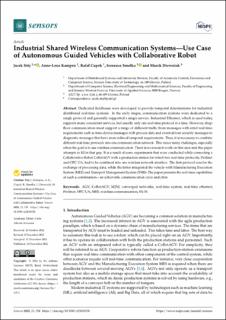| dc.description.abstract | Dedicated fieldbuses were developed to provide temporal determinisms for industrial distributed real-time systems. In the early stages, communication systems were dedicated to a single protocol and generally supported a single service. Industrial Ethernet, which is used today, supports many concurrent services, but usually only one real-time protocol at a time. However, shop-floor communication must support a range of different traffic from messages with strict real-time requirements such as time-driven messages with process data and event-driven security messages to diagnostic messages that have more relaxed temporal requirements. Thus, it is necessary to combine different real-time protocols into one communication network. This raises many challenges, especially when the goal is to use wireless communication. There is no research work on that area and this paper attempts to fill in that gap. It is a result of some experiments that were conducted while connecting a Collaborative Robot CoBotAGV with a production station for which two real-time protocols, Profinet and OPC UA, had to be combined into one wireless network interface. The first protocol was for the exchange of processing data, while the latter integrated the vehicle with Manufacturing Execution System (MES) and Transport Management System (TMS). The paper presents the real-time capabilities of such a combination—an achievable communication cycle and jitter. | en_US |

